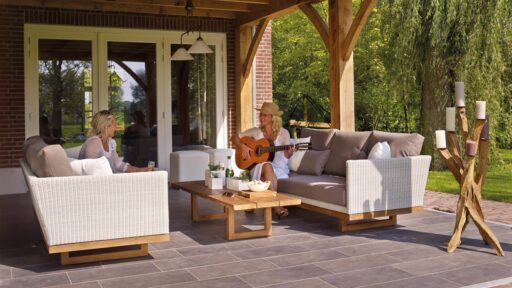Organic bamboo comforters are gaining popularity as an ideal choice for eco-friendly bedding, blending softness with breathability. An organic bamboo comforter promises comfort throughout the night, especially for those who tend to overheat in their sleep. With increasing awareness about environmentally conscious products, choosing bedding made from organic bamboo reflects an alignment with sustainability and comfort in daily life.
Understanding Organic Bamboo Comforters
An organic bamboo comforter stands apart from traditional options due to its distinct attributes:
- Softness & Breathability: Bamboo fabric is known for its inherent softness, offering a gentle touch against the skin.
- Material Composition: Bamboo comforters use fibers derived from bamboo plants that undergo a simple process to become soft fabric. This straightforward methodology maintains the material’s organic properties. Bamboo’s natural properties make it a prime choice for those looking to avoid synthetic materials or allergens commonly found in traditional comforters.
- Eco-Friendly Benefits: In addition to comfort, organic bamboo is also sustainable. Bamboo grows rapidly with minimal resources, making it an environmentally beneficial choice over cotton or synthetic fabrics.
Overall, transitioning to an organic bamboo comforter is not just a comfort upgrade. It’s a step toward merging luxury with sustainability.
Bamboo Comforter Cooling Features
Bamboo comforters are making a name for themselves primarily due to their impressive cooling properties. Here’s why they are considered the ideal choice for hot climates and sleepers:
- Temperature Regulation: Bamboo fabric is known for its natural ability to regulate temperature. This means it can keep you cool during warmer nights and warm during cooler nights.
- Moisture-Wicking: One of the standout features of a bamboo comforter is its moisture-wicking ability. The bamboo fibers absorb moisture efficiently from your body, reducing humidity between the comforter and your skin. This property helps you stay dry and comfortable all night long.
- Breathability: Bamboo comforters are highly breathable, allowing for better airflow compared to many other fabrics. This prevents heat from getting trapped, enhancing the overall cooling effect.
These factors make the bamboo comforter a top choice for anyone looking to sleep comfortably without overheating. They offer a practical solution for those in warmer climates or for those who tend to sweat during the night.
Lightweight Bamboo Comforter: A Year-Round Choice
When it comes to selecting comforters, weight and breathability are often at the top of the checklist. A lightweight bamboo comforter stands out for several reasons:
- Balanced Weight and Year-Round Versatility: Despite being lightweight, bamboo comforters offer the right amount of warmth and efficient temperature regulation, making them suitable for both summer and winter without having to be swapped out seasonally.
- Comparative Advantage: When compared to materials like cotton or down, bamboo is often more comfortable year-round. It combines lightness with the breathability necessary to avoid feeling hot or weighed down.
Choosing a lightweight bamboo comforter is an excellent decision for those who value ease of care and adaptability in their bedding. These comforters go beyond just being comfortable; they provide a practical, eco-friendly, and versatile sleeping solution for everyday use.
Viscose Comforter vs. Bamboo Viscose Comforter
When considering comforters, you might come across both viscose and bamboo viscose comforters. These may sound similar but have distinct differences worth noting.
- Viscose Comforter: Traditional viscose is a type of rayon made from various sources, including wood pulp. It is known for its softness and breathability, making it a common choice in bedding. However, the production process can be environmentally taxing, using significant amounts of chemicals.
- Bamboo Viscose Comforter: While also a type of rayon, bamboo viscose comes from bamboo plants, offering a more sustainable option. Bamboo grows quickly and requires fewer resources, which makes it eco-friendly. It retains the softness of regular viscose but with added environmental benefits.
To sum up, choosing a bamboo viscose comforter offers:
- Eco-friendliness: Made from renewable bamboo with less environmental impact.
- Comfort: Softness comparable to traditional viscose.
- Sustainability: Bamboo requires less water and no pesticides to grow.
If you are interested in picking up one of these comforters, check out DOZ.
Best Bamboo Comforter for Hot Sleepers
Finding the best bamboo comforter for hot sleepers involves understanding the features that ensure a cool and restful night’s sleep. Here are some things to look for:
- Breathability and Moisture-Wicking: These comforters excel in breathability and moisture-wicking ability, reducing overheating and keeping you dry.
- Lightweight Design: Opt for a lightweight bamboo comforter to ensure year-round usability, providing warmth during cooler months without causing overheating in the summer.
- Temperature Regulation: Some bamboo comforters are designed with technology that adapts to your body temperature, offering additional cooling for hot sleepers.
When searching for the ideal comforter, consider these features to enjoy the benefits of a cooling bamboo comforter. Making an informed choice can significantly enhance your sleeping experience.
Caring for Your Bamboo Comforter
Proper care is essential for maintaining the quality and longevity of your organic bamboo comforter. Here are some straightforward tips to keep your comforter in top condition:
- Washing Instructions:
- Always check the care label for specific instructions.
- Use a gentle or delicate cycle with cold water to maintain the fabric’s softness and prevent shrinkage.
- Opt for a mild detergent to avoid harsh chemicals that could damage the bamboo fibers.
- Drying Tips:
- If using a dryer, select a low heat setting to prevent overheating.
- Alternatively, air dry your comforter to maintain its natural softness and shape.
- Regular Maintenance:
- Shake out your comforter regularly to keep it fluffy.
- Use a duvet cover to protect against stains and dirt, reducing the need for frequent washes, which can wear out the fabric over time.
- Storage Advice:
- Store in a dry, cool place during off-seasons.
- Consider using a breathable storage bag to keep it fresh and allow airflow. Avoid plastic bags, as they can trap moisture and lead to mold growth.
Making the Eco-friendly Choice
Choosing an organic bamboo comforter is not just beneficial for comfort; it also supports environmental sustainability. Here’s why opting for an eco-friendly bedding choice like bamboo makes a difference:
- Sustainable Production: Bamboo grows rapidly and requires minimal water, making it an environmentally friendly raw material. It regenerates quickly without the need for fertilizers or pesticides.
- Reduced Carbon Footprint: The production of bamboo textiles generally results in lower emissions compared to conventional cotton or synthetic materials.
- Biodegradable Material: At the end of its life cycle, bamboo fabric decomposes naturally, reducing environmental waste.
- Organic Certification: Look for comforters with organic certifications, ensuring that no harmful chemicals were used in the manufacturing process. This promotes a healthier environment and a safer product for consumers.
By choosing an organic bamboo comforter, you’re making a conscientious decision that benefits both you and the planet. For more on sustainable practices in bamboo production, and to see how your choice matters, consider learning from authoritative sources about the environmental impact of bamboo.








